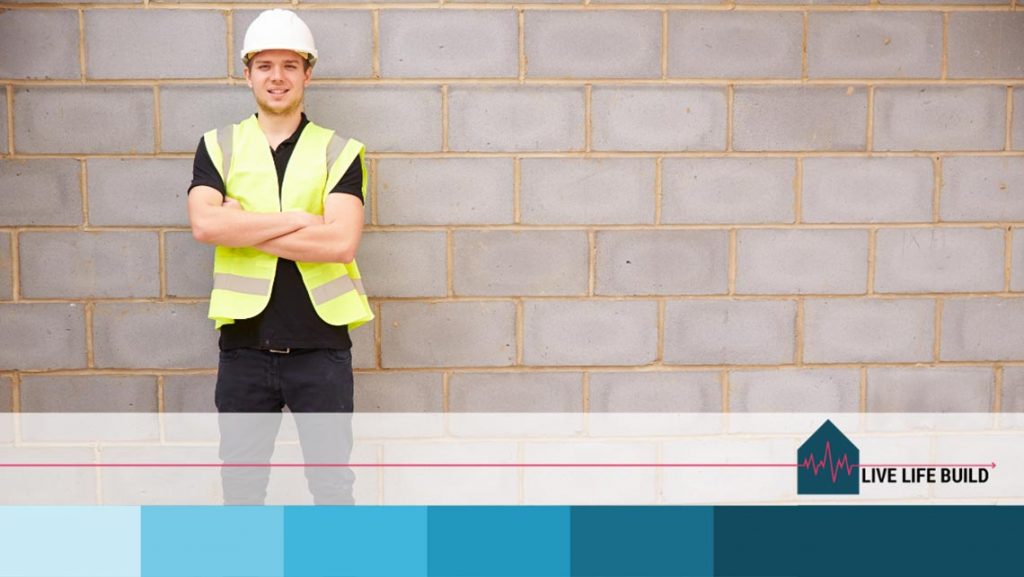If you’re growing your team, what’s the best way?
Should you find subcontractors, or employ staff on the books. Read on to learn the best way to grow your team.
As you’re growing your building business, it can become challenging to figure out the best way to grow your team.
Do you source more subcontractors that can help you deliver in busy times, because it gives you the flexibility and freedom to down-scale fairly easily if things get quiet?
Or, do you commit to your growth and your business, and hire employees and contractors? And then potentially deal with the time requirements of needing to train those team-members, help them understand your business, and then figure out how you’ll consistently keep them busy because they’re costing you money whether they’re working or not?
There are advantages and disadvantages to both sides, and what will be most suitable for you will depend on you, your business and your plans for the future.
In this blog, we share some questions and ideas to work through, so you can work out what might be the best fit for you and your business.
Read on …
5. WHAT TYPE OF BUSINESS ARE YOU RUNNING?
As yourself – what type of business are you running?
This is a really important question you need to ask yourself if you want to get clarity around the type of team you need to be building.
Are you committing to growing the business and making it sustainable? Because that requires a level of strategy, planning, and marketing to ensure a steady stream of work to keep your team going.
A lot of businesses don’t have any plan in place, so it makes it very hard to know how many team members you need, and when you are going to need them.
Growing the team and working out how to hire, and when, is one of the most commonly discussed topics from our builder members as their businesses grow.
It’s really common, because when builders are running a business where they just simply keep riding the waves up and down as they get jobs coming in, it will mean that they have times when they just simply can’t keep up, and this puts added pressure on their entire team. And then they have periods of very little or NO work that puts enormous pressure on them as the business owner trying to keep their team busy.
And it’s this reason that many growing builders believe subcontractors are the best way to go, so they have flexibility to let go of staff when work drops off. However, when things get busy, scrambling for extra help can be stressful, and losing the investment you make in training and teamwork each time there’s a downturn can be frustrating.
So, knowing the type of building business you want can help with this as it can be the difference between having full time employees, full time contractors or getting in subcontractors as you need them.
Depending on how you choose to set your business up with regards to the labour can change your business overheads dramatically. Because of this it’s worth spending the time to think about what’s going to work best for you.

4. THE TYPE OF PROJECTS YOU’RE DOING
The type of projects you choose to build in your building business will normally determine the type of team you also build.
This is something that needs to be very carefully considered, as the type of team you build also has a big influence on the quality of the projects you build.
You might have an expectation and standard that you want to ensure you deliver to all your clients. But is the business model you have in your building business allowing you to deliver it?
In most building businesses the carpentry and general labour are the two areas that builders struggle with, in relation to how they set up / maintain and build their team.
These two labour components are often also the biggest expenses on each project.
So it’s important to figure out whether you have full time employees, full time contractors or getting in subcontractors as you need them.
Choosing to employ full time employees and contract carpenters has a lot of advantages.
- You will have a lot more control over the quality of the work you do
- You can teach them why and how you do things
- You can manage the labour between different job sites as needed
- You can manage all the little tasks that come up regularly, especially on custom homes
- You can do a wider variety of projects as you can upskill them when needed
- You can have more control over the timeline of the project
- You can build a culture that matches your mission and vision
- You can work with them and help as one of the team.
One of the down sides to employing full time employees and contract carpenters is they will normally cost you more money.
When you chose to use subcontract carpenters to do the carpentry works on your projects you need to consider the following:
- You don’t have control of the work they do so they might not work with your project schedules as well as you need them too
- They work for multiple builders so the quality can vary a lot
- They are doing it for a fixed price so they just want to get in and out. This may mean that they miss things that you feel should be the standard.
- You need to have very clear scopes of work
- You will have to make sure all their work is up to your standard
- Other builders they work for may let things slide, this may mean that you end up always having to teach them the standards and regulations
- If something is missed by them and it affects another trade you may get stuck as they can’t get straight back to fix it, and this may delay future trades or cost you a back charge from the trade if they have to sort it out.
- And the biggest one is that they aren’t invested in your company. You are just another builder that they smash out work for.
You can see from these two lists how the business model you have has such an effect on how you create the right team to deliver your projects.

3. WHAT IS YOUR BUSINESS MODEL?
When it comes to building a team to deliver your projects on site, it’s important to think about the management side of things.
And when it comes to having full time employees, full time contractors or getting in subcontractors to do the work, it will be entirely dependent on your business model as to whether it’s a pro or a con.
How can you work this out for your business model?
Well, these are some of the things to consider about where to source the extra team you need when you’re growing:
- What time and resources do you have?
- Is it just you?
- Do you have the supervision or management team to handle them?
- How big do you want to be?
- Do you have a plan to handle growth?
- Do you understand your overheads so your business can afford admin / management?
- What role do you play in the business now and as it grows?
- What other resources and assets are you going to need?
- Is it worth it?
- Do you want to deal / manage a team within your business or do you want to just have one point of contact that runs their own team to do your work?
On top of this it may come down to the type of person you are and how you have been taught. There is a lot to consider.

2. HOW YOU PLAN YOUR TIMELINES
If you have your own team it’s really important that you have systems in place to plan ahead for you to have a profitable, successful business.
Perhaps Duayne’s experience will be familiar to you …
Duayne tells lots of stories from his early days, of times when he had some fantastic projects that made great profit. But then the profit got all chewed up throughout the year when he had slow times. He had to keep his team employed doing work around his house or for friends, so he didn’t lose them. This meant that over a financial year he threw away lots of money that should have been company profit.
He says this was one of those roller coaster experiences where he would win some good projects, then take his eye off the ball and not keep chasing new work.
Most of the time he wasn’t doing schedules on his projects so he didn’t know exactly when they would finish.
And he would get so pumped up about winning some work that all his focus would go on getting them started and completed.
By the time he got the projects under control and started getting a feel for when they would be finished, it was too late. And so he would then pump all his time into pricing projects that he had ignored for a while to try and get new work for his team to go on to.
We all know that the design and pricing stage can often be longer than the build time. So running a building business this way is a recipe for disaster. It’s incredibly reactive, and means that planning ahead can be very challenging.
Over the years that Duayne has been continually improving the PAC Process, he has solved this huge problem he had in his business.
The PAC Process allows him to have a good knowledge of every project’s status and track exactly where each of his projects are up to in the early stages.
This means he can forecast exactly when projects will be ready to complete design reviews, scopes of work, pricing, going to contract, receiving deposits, approvals and starting on site.
Something to be aware of is that if you’re not able to communicate with your team about the stability of their upcoming work, it can create challenges with team morale and management.
The PAC Process is fantastic for Duayne’s business, because it gives him more advance knowledge of the project pipeline, and what work is coming up. And by sharing this information with his team, it means they don’t get nervous about the instability of their work.

1. ADVANTAGES AND DISADVANTAGES
As with everything in life, there are advantages and disadvantages to each side of growing with subcontractors vs taking on employees.
How you choose to set up your building business model and team is completely up to you. The most important thing is that you consider all options and talk to the right people that can help you make an educated decision.
It’s very important you also consider the accounting, insurance and workplace health and safety obligations. These change considerably depending on how your team is seen to be employed, and you definitely don’t want to get court out with things being wrong.
The ATO, and workplace health and safety have been known to back-date companies for two years and make them pay taxes and insurances back.
You need to consider:
- Productivity (getting more out of a contractor but quality may be compromised)
- Cost (higher cost to have your own guys on the books)
- What will get you a better outcome
- What will give you more control
- What will work best for the projects you want to do
- Flexibility with being able to be moving guys around between projects
- Availability (your own team is there).
- Investment in training and education builds improvement for your business
- Team engagement
- What business culture are you wanting
So, how do you work out what will suit you? Take yourself through each of these areas, and list the advantages and disadvantages to each of them. You’ll find it will help you understand whether the right track for you is to grow your team through hiring subcontractors, or bringing on employees.
Remember too, that you don’t have to do this all at once. Many of our builder members have success with gradually growing their team, and balancing between both subcontractors and employees.
And we also find that builders have great success in being part of a community of collaborative builders, because they can reach out to others to share team members with other builders based on when they’re quiet or busy.
As you grow your business, growing your team successfully will be one of the biggest challenges to navigate. Managing people (especially if it’s something you don’t have experience in, or struggle with) can be a steep learning curve.
However, if you want to be strategic about your growth, then plan the way you’ll grow your team too.
Don’t just react, put out fires and throw subcontractors at the situation each time you get busy.
Instead of crossing your fingers and hoping for the best, work through the options, and plan for the future.

So, here’s our 5, 4, 3, 2, 1 to identify your ideal project.
5. Have you asked your team what their goals are?
4. How can you help and facilitate your team’s goals?
3. What are your goals as a team?
2. Holding people accountable.
1. Celebrate the wins and create a good work environment.
Live Life Build’s 6P Methodology unlocks the 6 ways to elevate your building business:
PERSONAL | PROJECTS | PEOPLE | PARTNERSHIPS | PROCESSES | PROFESSIONAL
How are you growing your team? Are you thinking short term or long term?

